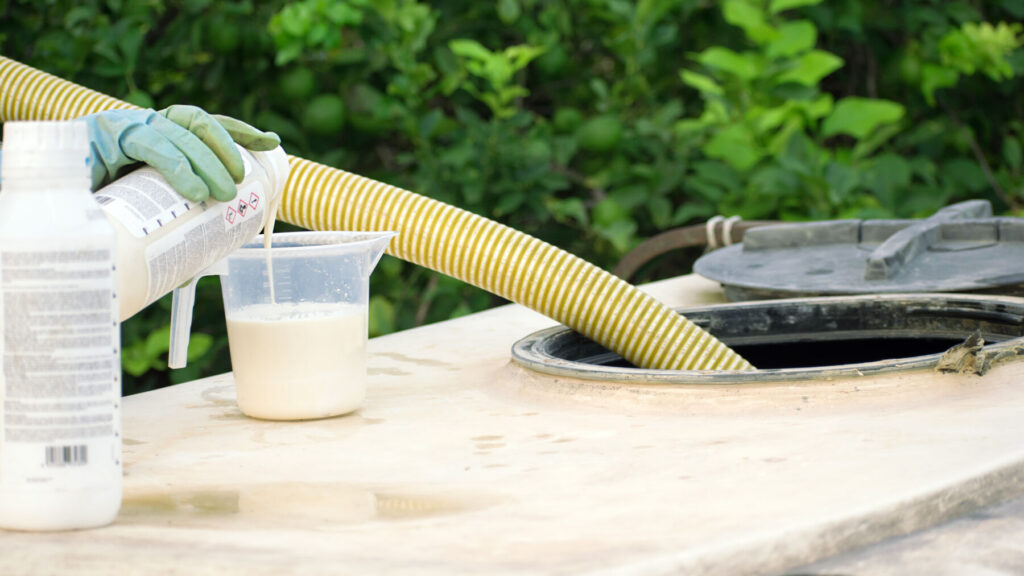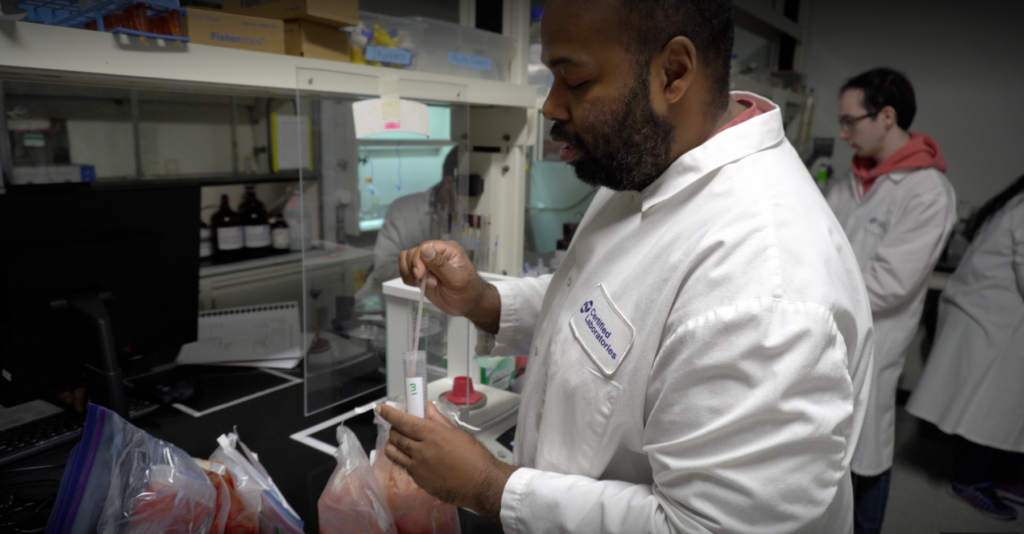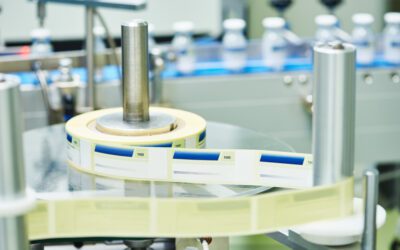Alex Brandt, Ph.D., Chief Science Officer, Food Safety Net Services
In 2016, it was reported that United States food producers used more than 320 million pounds of pesticides, many of which were already banned in the EU. Since major producers rely on pesticides to keep their crops free from pests, pesticide testing becomes crucial. This testing helps maintain allowable levels of pesticides in food, ensuring they are low enough to not pose a risk to human health and emphasizing the welfare of consumers.
The Growing Use of Pesticides in Agriculture: The Benefits and Risks They Pose
Pesticide use in agriculture can be traced back to the ancient Sumerians with their use of elemental sulfur in their crops as protection against various insects. As technology continues to evolve, new chemical compounds have been discovered and developed for use in modern agriculture.
Despite the widespread recognition that pesticides have adverse effects on human health and the environment, they continue to be used in the modern industrial system.

Why Do We Use Pesticides?
Farmers today use a wide variety of pesticides specifically developed to be safer, more effective and targeted in controlling pests and the diseases they cause. Using these pesticides, farmers can maximize yield while also ensuring that consumers get quality, disease-free food and food products.
These are the most common pesticides used in the modern agricultural system:
- Algaecides: Control algal growth
- Antimicrobials: Prevent the growth of bacteria, viruses and other microbes
- Disinfectants: Prevent the growth of bacteria, viruses and other microbes
- Fungicides: Control fungal problems like molds, mildew and rust
- Herbicides: Control the growth of weeds that compete with plants for nutrients
- Insecticides: Kill insect pests
- Insect Growth Regulators: Hinder the growth and reproduction of insect pests
- Rodenticides: Kill rodent pests like rats, mice and gophers
What are the Risks Posed by Pesticides?
Without pesticides, more than half of crops grown today would eventually be lost due to pests and disease. But, despite their benefits, most pesticides also have the capacity to harm consumers upon inhalation, skin contact or ingestion of pesticide residue on food. These could lead to adverse effects on consumer health, which include the following:
Acute (Immediate) Effects of Pesticides
- Burning, stinging or itching on eyes, throat or skin
- Blister formation
- Nausea
- Dizziness
- Diarrhea
- Flu-like symptoms
Chronic (Long-Term) Effects of Pesticides
- Brain and nervous-system damage
- Congenital disabilities and fertility issues
- Lymphoma, leukemia and other forms of cancer
- Reproductive issues
- Liver and kidney problems
Determining the “Safe” Levels of Pesticides in Our Food
Several government agencies, of which three are federal agencies, share responsibility in the regulation and enforcement of guidelines relating to pesticide residue in food. These guidelines include the following:
- The U.S. Environmental Protection Agency (EPA): Establishes tolerances [maximum residue levels (MRLs)] on specific pesticide chemicals used on human or animal food.
- The U.S. Food and Drug Administration (FDA): Enforces tolerances on both import and domestic foods by conducting testing activities to determine whether residues are within these residue limits. These do not include meat, poultry, dairy and some fish and egg products. Inspection of imports may result in Detention Without Physical Examination (DWPE) action and a possible Import Alert.
- The U.S. Department of Agriculture (USDA): Tests meat, poultry, dairy and fish products under the Food Safety and Inspection Service (FSIS).
- State enforcement agencies may also check domestically produced foods.
But, among those agencies, the U.S. EPA is the primary agency responsible for setting standards on pesticide residues allowed to remain on food. When determining these tolerances, the EPA considers the following factors:
- The level of toxicity in the pesticide and its break-down products
- The amount used and frequency of application
- The amount of residue that remains in the food by the time it is marketed and prepared
- All possible routes of exposure to the pesticide
The agency then performs dietary risk assessments and combines the results with information about the potential harm posed by pesticide residues to determine the risks. If these risks are deemed unacceptable, then the tolerances won’t be approved. Foods containing a measurable amount of an unallowed residue are in violation and subject to detention and legal action.
But, when determined to not cause harm to consumers, the tolerances are approved, and the pesticide can be used under specific conditions. These tolerances vary depending on the commodity and the type of pesticide used.
According to U.S. EPA guidelines, allowed pesticides for use should be applied only according to label directions to allow residue levels to remain within the MRL. Tested foods with residue levels exceeding the MRL will be subject to seizure by the government.

What is Pesticide Testing?
Pesticide testing, or pesticide residue testing, is an analytical process used to identify and quantify the levels of pesticides in food and food products. In doing so, food producers and manufacturers are able to comply with government regulations on food safety and gain confidence that their products pose no threat to consumer health and safety.
How is Pesticide Testing Performed?
- The pesticides test procedure begins with the collection of representative samples and the extraction of residues from the samples
- Sample extracts are cleaned up to ensure accurate detection of the residues
- Either gas or liquid chromatography is used to analyze volatile or non-volatile compounds, respectively
At Food Safety Net Services (FSNS), we apply thorough pesticides testing methods to accurately determine pesticide residues in food to ensure compliance within MRLs set by the U.S. EPA. We have a network of certified laboratories fully equipped to serve your pesticide testing needs. FSNS also works with the FDA directly in submitting required documents.
Advantages of Pesticide Testing
By conducting a pesticides test on your food products, you will be able to comply with U.S. EPA and FDA regulations. But, aside from compliance, pesticide testing also offers several advantages for your business:
- Complete Product Confidence: Pesticides test results on the residue levels in food confirm whether the food is safe for human and animal consumption. With this confirmation, food producers and manufacturers can ship out their products with complete confidence in the quality.
- Consumer Safety: Continued compliance with U.S. EPA and FDA regulations through repeat pesticide testing ensures consumers can get high-quality food products that are free from harmful chemicals left by pesticide residue.
- Brand Stability: As you continue to supply the market with safe, high-quality food products, you can secure your brand’s reputation from negative publicity that arises when government agencies seize your products due to the presence of harmful chemicals.
Why Choose FSNS as Your Pesticide Residue Testing Lab?
Pesticide testing is crucial in ensuring that produce and food products are free from pesticides or at least possess low levels of pesticide residue that are considered safe as mandated by the U.S. EPA. When higher levels are detected, necessary corrective measures can be taken to address the issue and ensure compliance.
FSNS is your partner when looking for a pesticide residue testing lab. We use accurate pesticide testing methods that align with industry standards in the detection and testing of more than 400 pesticides from foods with low fat content such as fruits, vegetables and grains.
The FSNS method for detection uses QuEChERS (Quick Easy Cheap Effective Rugged Safe), a protocol developed by the U.S. Department of Agriculture (USDA) during the extraction and clean-up of food samples and special salts for the complete collection of pesticide residues in food. We combine this method with GC-MS/MS and LC-MS/MS detection to accurately measure and confirm the presence of detected pesticides in submitted food samples. In addition, test results will also include the MRLs as set by U.S. guidelines as well as in other major countries of interest.
See Our Chemistry Testing Capabilities
Reliable Pesticide Testing for Proper Food Safety
FSNS is a network of ISO-17025- and A2LA-accredited operating laboratories that use the highest standards in pesticide testing to ensure accurate results. When it comes to pesticide testing, we follow strict U.S. FDA guidelines and lab-quality procedures while implementing fully validated and robust methodology. Further, our state-of-the-art testing equipment, such as GC-MS/MS and LC-MS/MS, accurately detect pesticides even at trace amounts.
Our tests are available at competitive prices, with options for rush testing as well. For any inquiries or questions about our pesticide testing methods, or if you would like more information, contact us here, email customerservice@fsns.com or call 888-525-9788.


